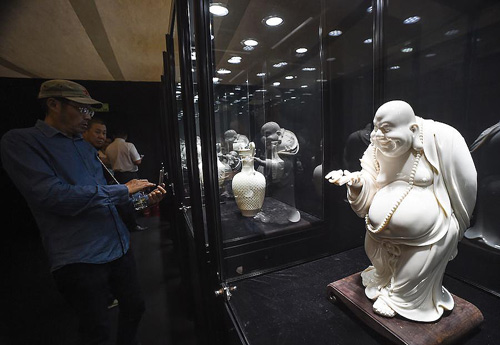

Since 2009, the National Copyright Administration of China has drawn up an annual list of the 10 most important events and facts that influence the nation's copyright business. The most recent 2016 list includes the experience of Dehua county in Fujian province, where procelain production dates back to Song Dynasty (960-1279).
The National Copyright Administration of China held an exhibition in November 2016 in Geneva to introduce how the copyright of the Dehua ceramics is well protected. WIPO chose the county as an example to study the impact of copyright on a primary regional industry in 2010.
Dehua started to produce porcelain from Song Dynasty and the Dehua porcelain made a huge development after the Ming Dynasty (1368-1644). Milk white and crystal-clear, its products are mainly daily porcelain wares including bottles, pots, cups and plates, as well as porcelain furnishings that are sold at home and abroad.
 |
| Dehua porcelain on show at a Beijing exhibition in May 2016. [Photo by Luo Xiaoguang/Xinhua] |
 |
|
Dehua porcelain is a special type of white porcelain that often took on religious form such as Buddhist deities from its early origins in the Song Dynasty (960-1279) through Ming and Qing (1644-1911) dynasties. [Photo by Luo Xiaoguang/Xinhua] |
 |
|
Dehua porcelain takes its name from the Fujian province town it originates from. The art form developed in prominence during the Ming Dynasty (1368-1644) and became an increasingly popular commodity that was exported to Southeast Asia and Europe. [Photo by Luo Xiaoguang/Xinhua] |
Related story:
Copyright vital for growth of Dehua's ceramic industry
'Chinese White' international porcelain contest held in Fujian